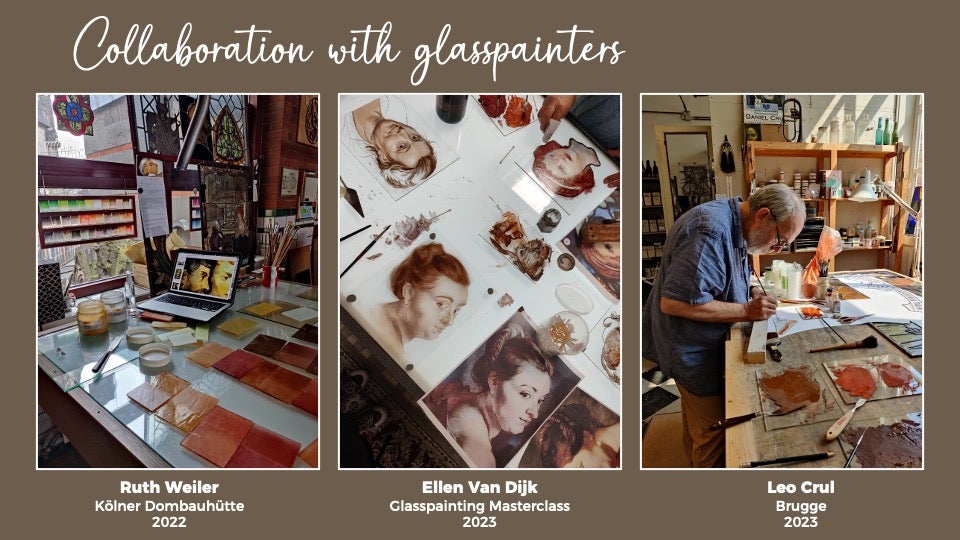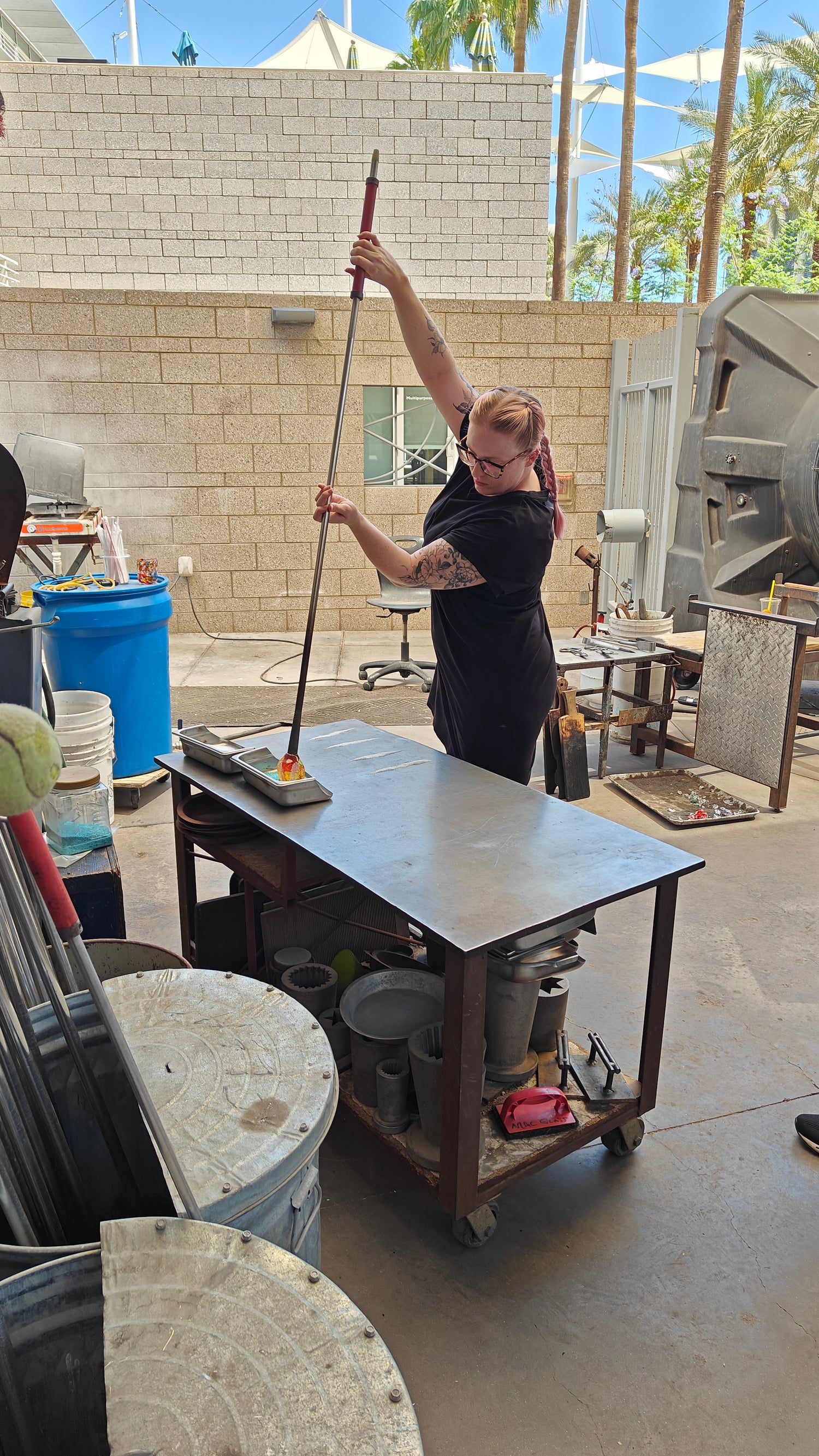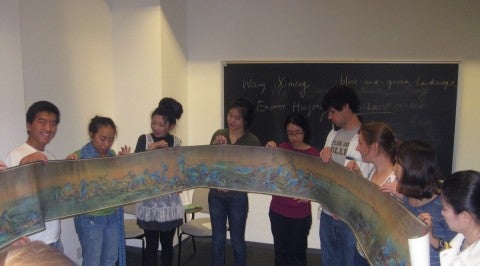Summertime is often filled with even more activities and research for grad students, as is the case with HART PhD candidate Margot Steurbaut who participated in the 2025 American Glass Guild Conference “Some Like it Hot” in Arizona at the end of May presenting her paper “Rediscovering historical techniques through experiment: How contemporary stained-glass practices can inform art-historical scholarship.”
During the conference, Marge connected with American-based practitioners of glass and artists. Afterwards, Marge attended a rondell glassblowing class with Tyler Kimball from Monarch Glass Studios and a glass painting class with Kathy Jordan from Willet Studios.
Marge is currently trekking through Flanders, Belgium in search of stained glass to protect as part of her research fellowship with the Rubenshuis and the Flemish Government. “This project looks for stained-glass gaps in the current list of Flemish Masterpieces, and I determine which pieces those gaps are, in need of protection and recognition. I make a dossier for each object with motivation on why they are both rare and indispensable for Flemish cultural heritage. I am heavily drawing on my expertise of Flemish stained glass, and pieces range from the 11th to the 19th century.”
Following the research fellowship, Marge will attend the Summer Institute of Netherlandish Art in Amsterdam for two weeks where she will have the opportunity to interact with an interdisciplinary team of researchers, curators, conservators, educators and scientists during gallery visits, hands-on sessions in conservation studios, and panel discussions.
And to top it off, Marge also published her first peer-reviewed article that is free and open to the public for reading: Margot Steurbaut, "The glazing of Beverwijck's First protestant church: Colonial power visualized," Nederlands Kunsthistorisch Jaarboek, vol. 75-1 (2025), pp. 40-63.
Abstract | Rediscovering historical techniques through experiment: How contemporary stained-glass practices can inform art-historical scholarship
This paper explores the overlooked potential for stained-glass practitioners to inform art-historical research, providing fresh insights into historical techniques. While practitioners might already draw from art-historical scholarship to inspire their work, the reverse—researchers involving master craftsmen—seems less common. I aim to demonstrate how working closely with today’s stained-glass artists can reveal lost techniques that scholars might miss using only traditional research methods.
Scholars often turn to historical treatises to understand past stained-glass methods, but these documents can be problematic. They are frequently incomplete, vaguely written, or aimed more at intellectual audiences than practical ones. And even when useful, many researchers lack the technical expertise to fully grasp the treatises' meaning. This has left a significant gap in art history—one where the understanding of historical stained-glass practices remains limited.
So, how can scholars better explain why a particular piece of stained glass looks the way it does? In this presentation, I will argue that collaborating with master practitioners offers a crucial solution. Stained glass, with its millennia-old tradition, has remained in many ways surprisingly consistent, allowing today’s experts to retrace forgotten methods through experimentation. By working with skilled glass painters, scholars can bridge the gap between theory and practice.
To illustrate this, I will share how three master glass painters helped rediscover the innovative 17th-century techniques used by Flemish artist Abraham van Diepenbeeck. Their insights were pivotal in bringing these techniques back to life.
This presentation aims to foster better connections between the separated realms of practice and theory, giving craftsmen a voice in scholarship. I also look forward to hearing feedback from practitioners on how to further incorporate their expertise and better collaborate in this field.











